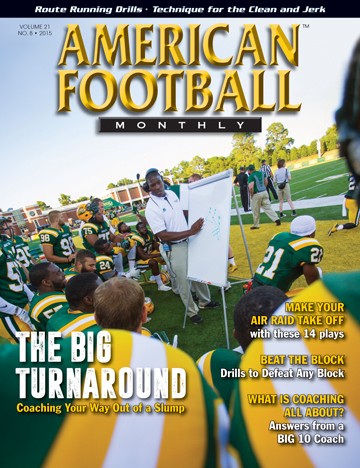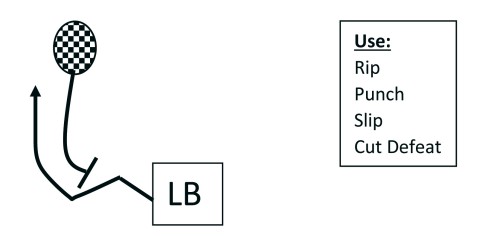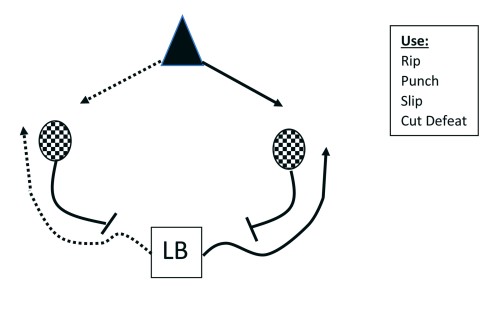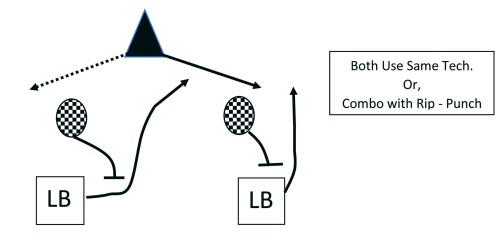Article CategoriesAFM Magazine
|
A Quick, Simple, High Rep Progression for Defeating Blocksby: Tim CooperDefensive Coordinator • Butler University © More from this issue Repetitions with four different ways to defeat blocks – the rip, punch, slip and cut techniques – will help improve your overall defense. One of the many great things about being at Butler University is being centrally located and having so many terrific football programs very close to use as professional development resources. Let’s be clear, no one is inventing a new defense. However, there are many different schemes, philosophies, fits, terminology, etc. This is where I think all defensive coaches need to start. You need something to “hang your hat” on. For us it is our base defense, which is a 4-3, cover 4. We know that we can defend any formation, or play, with our base defense. The reason for establishing a base defensive philosophy (system) is because all your individual drills and group work need to be relative to what techniques you use in your system. In other words, practice what you play and get really good at it. Our linebackers are “fast flow” backers. This simply means that we teach four basic block defeats. All of them involve showing up and surfacing past the blocker. We are not a “2 gap” unit but a single gap defense. The number one basic key in a single gap defense is being able to “clear up” the picture so that the next man can fit off of you. Therefore, you can never get covered up by a blocker. The four block defeats I coach are the rip, punch, slip, and cut defeat techniques. We’re going to concentrate on a quick, simple, high rep progression of teaching these block defeat techniques. The progression also incorporates reading a key and understanding leverage relative to a ball carrier.
Next we add in the aspect of reading a key and transitioning the eyes to a “down block.” The key in this drill is the RB. The LB will read a key to press the line of scrimmage (LOS) either to his right or left. Once he has made his initial key and presses the LOS, he encounters a blocker. This is where he needs to execute a “rip” technique and continue his pursue to the ball. I will set two potential blockers to the LBs right and left with the LB in the middle looking at his key (Diagram 2). Both blockers will come out and attack the LB in the middle. The LBs key will give him the direction of the play and the side that he needs to defeat the down block. In this drill the LB needs to see his key, then transition his eyes to the blocker that he needs to defeat and finally back to the ball carrier.
Diagram 2. Finally we will use this drill (Diagram 3) to teach pursuit angles and fits, and leverage in relation to the ball carrier. Again, being a single gap, fast flowing LB unit, I do not talk a lot in terms of “gaps.” It’s about sprinting to the heels of the defensive linemen as fast as we can and making them right.
Teaching of the PUNCH The three step teaching progression can be used with all three of the block defeat techniques and some of the steps you can combine techniques. For example, in the “2 on 2” drill, I will instruct the frontside LB to use a punch while the backside/tracking LB will use a rip. I really like this progression because part of developing good linebacker play is teaching them that playing linebacker is not a world of “absolutes”. There is some “gray” area and ultimately you have to get to the ball. I do think it is possible to develop vision and an aggressive attacking mentality in your linebackers. We keep our keys simple. Our motto is “see key – go!” Trust what you see and commit to it. |
|
| HOME |
MAGAZINE |
SUBSCRIBE | ONLINE COLUMNISTS | COACHING VIDEOS |
Copyright 2025, AmericanFootballMonthly.com
All Rights Reserved







